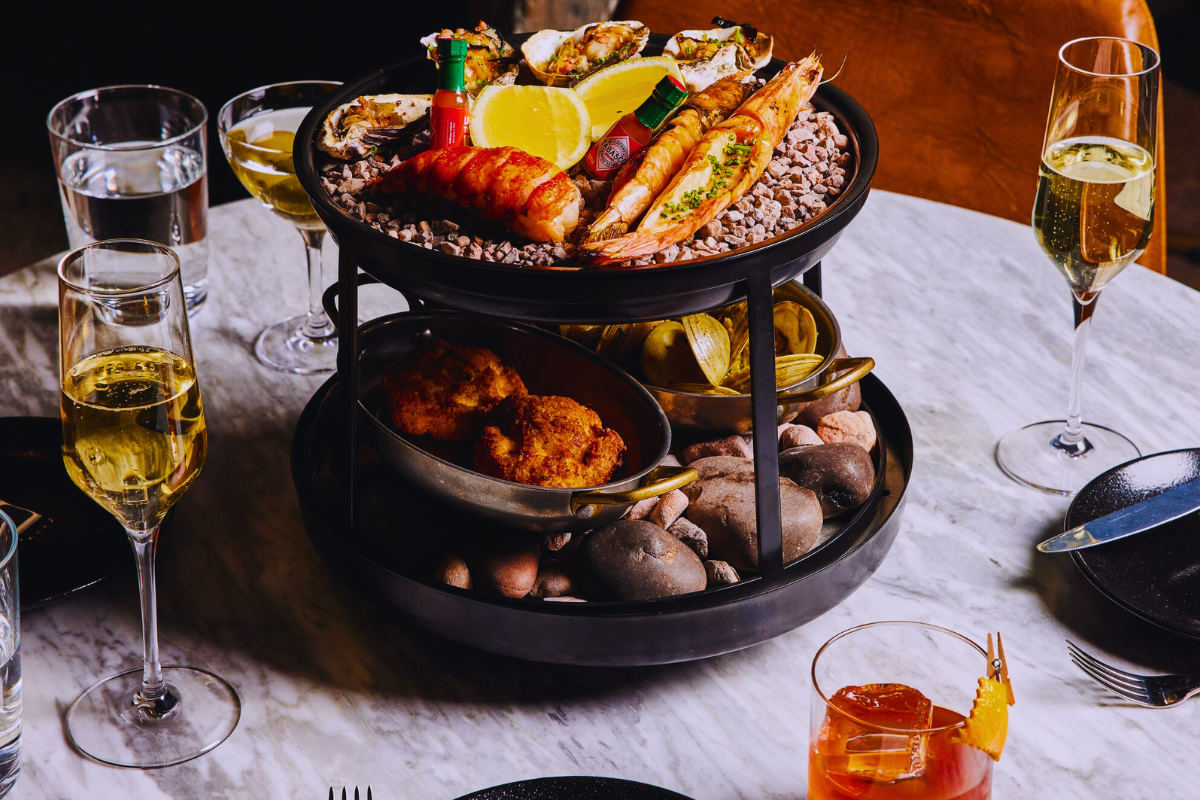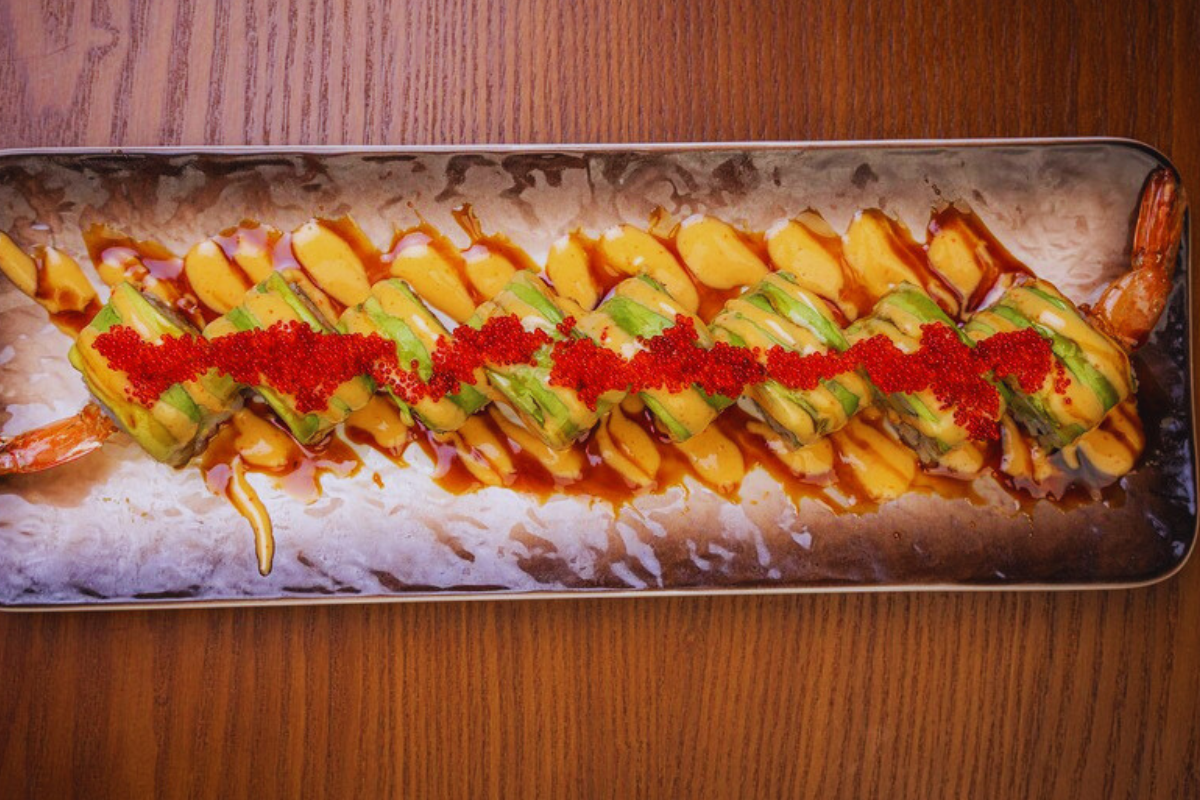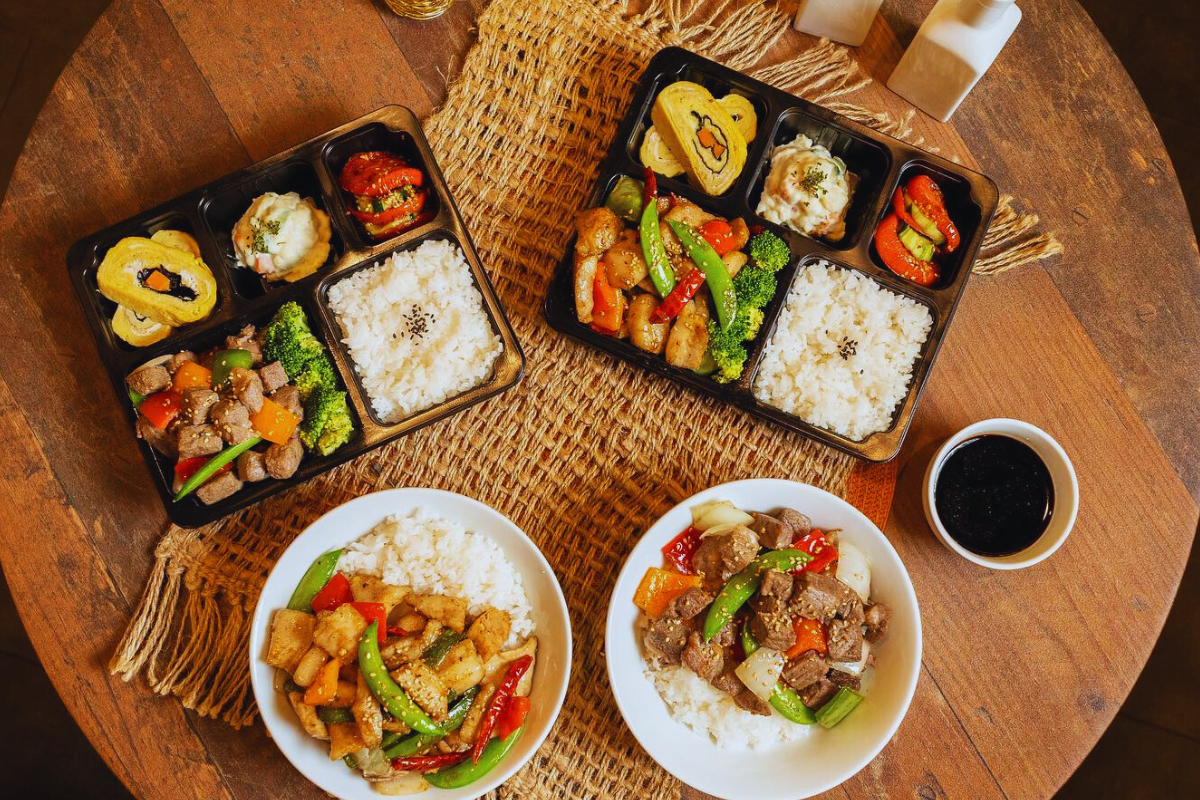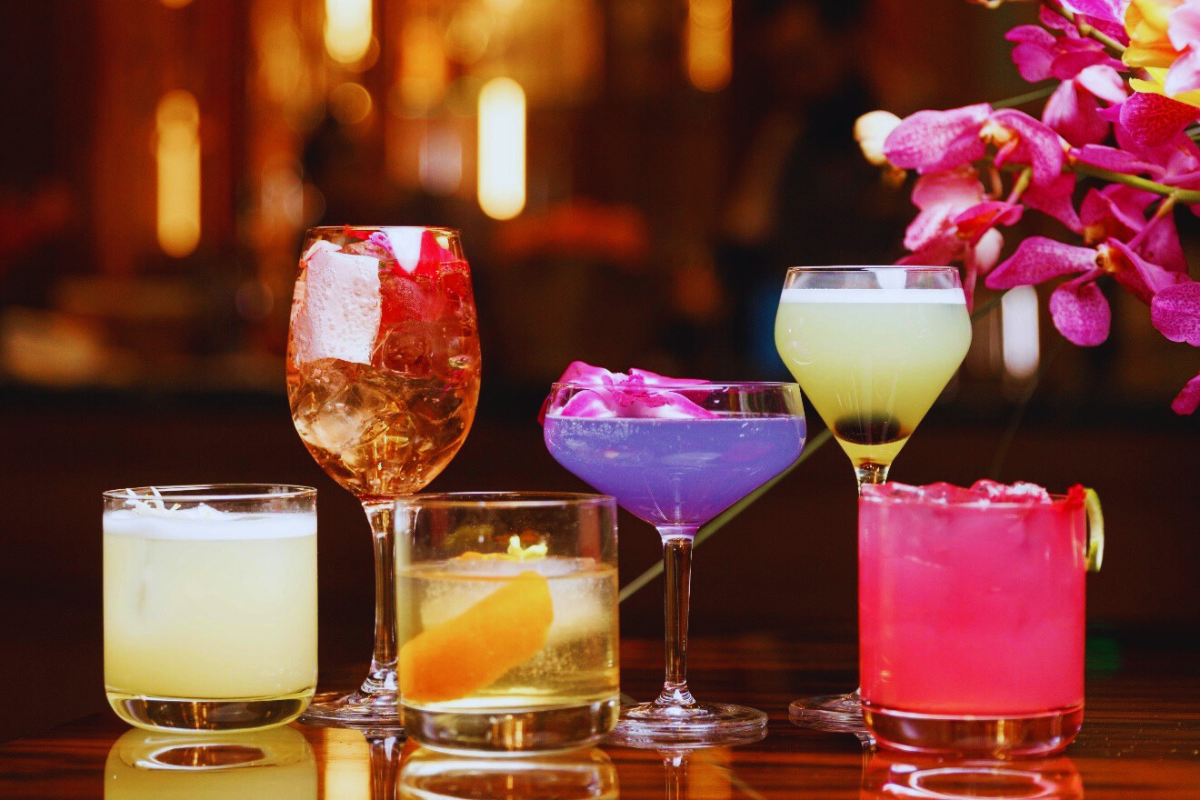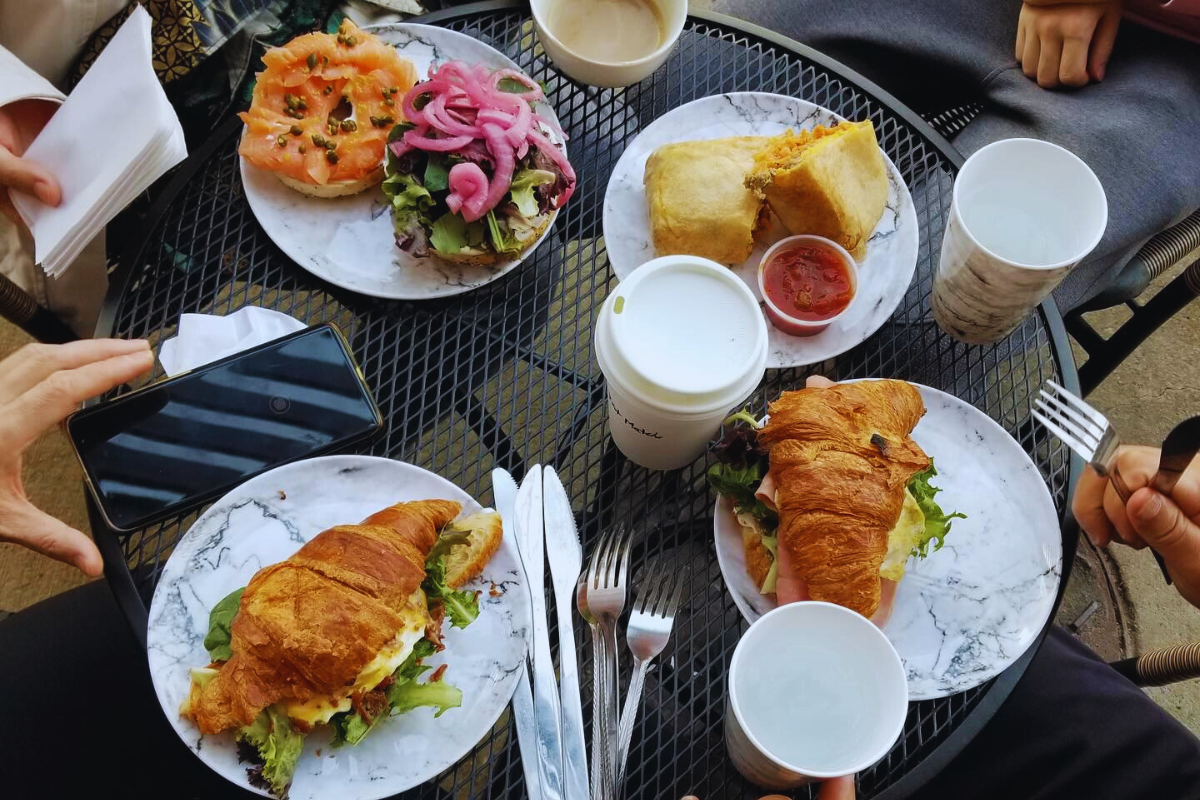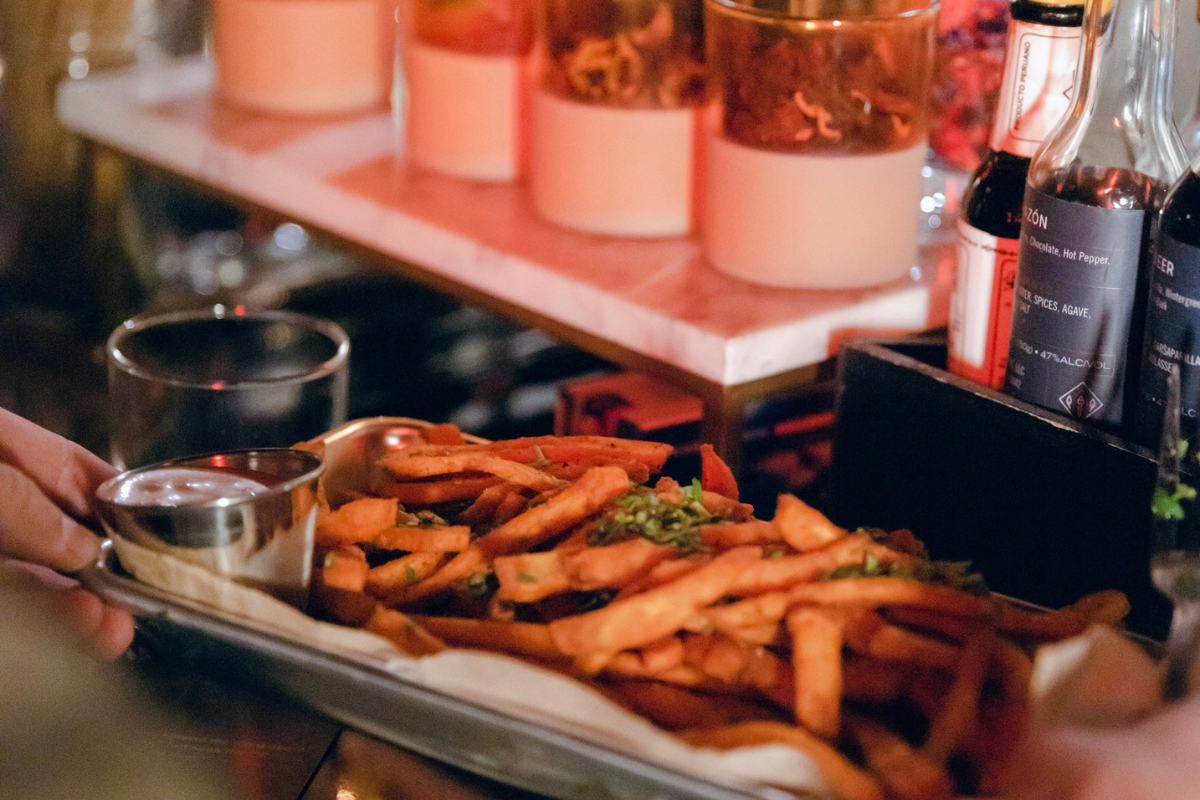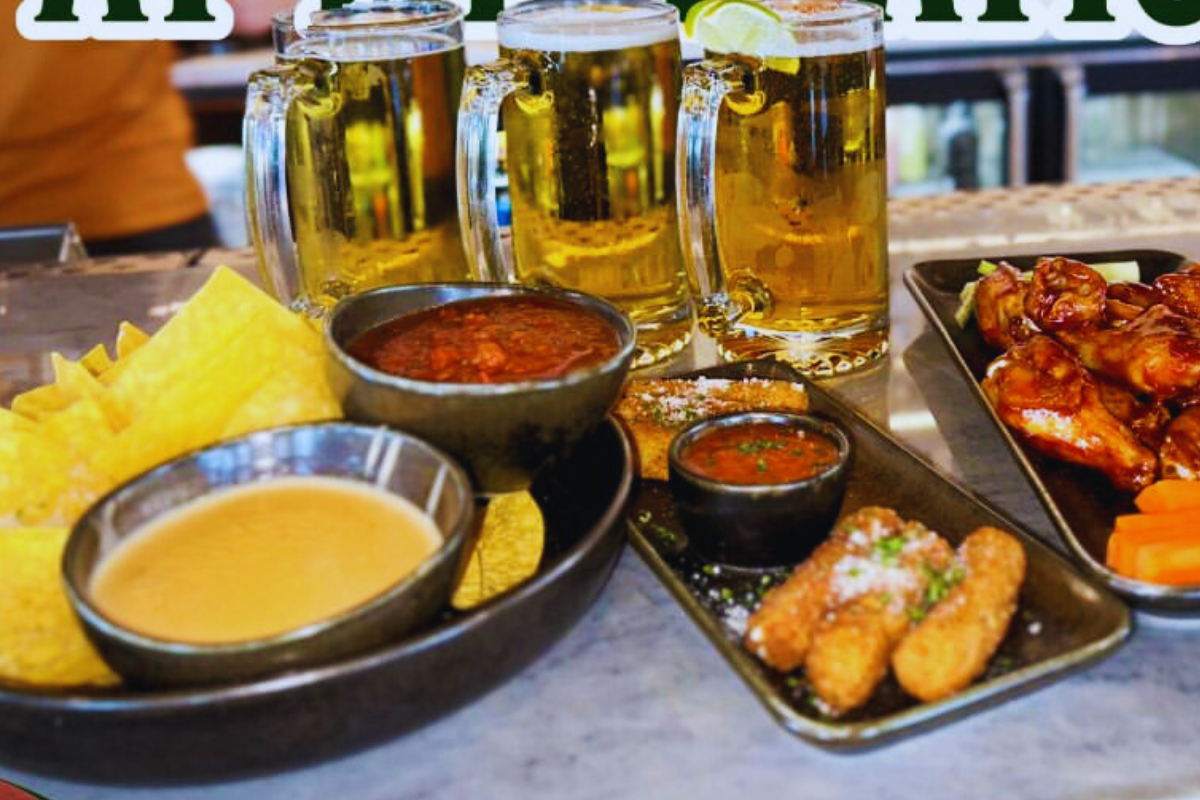Home
Restaurants
The Soul of Japan Lands in Midvale: Inside UT Craft Ramen's Mission to Bring Authentic Japanese Ramen to Utah
The Soul of Japan Lands in Midvale: Inside UT Craft Ramen's Mission to Bring Authentic Japanese Ramen to Utah
Walk into UT Craft Ramen on a Saturday evening and you'll be greeted the way every customer in Japan should be welcomed: with a spirited "Irasshaimase!"—a traditional phrase that translates to "Welcome, please come in!" The anime posters of Luffy and Naruto slurping noodles together on the wall, the glass cases packed with Japanese candy and collectibles, the hum of conversations punctuated by satisfied slurps—this isn't just another ramen shop opening in Utah's ongoing ramen renaissance. This is Ken Ota's answer to a question he's been asking for nearly two decades: How do you bring real Japanese ramen, the kind made with nothing but time, bones, and dedication, to a place that's never tasted it before?
The team at UT Craft Ramen urged one food writer to start eating their UT Black ramen as soon as it arrived, while it was still hot, so all the steam would hit them right in the face as they slurped up the noodles. That advice? It's the only way to experience what Ota and his team, including co-owner Dustin Pham—one of Ota's ramen students from his consulting days—are doing at their Midvale location on Union Park Avenue. This is authentic Japanese ramen Midvale Utah finally has access to, and it's changing the way people in the South Salt Lake Valley think about what a bowl of noodles can be.

From Southern California to Kansas City to Utah: Ken Ota's Journey to Master Ramen
Kenichi Ota didn't grow up dreaming of opening ramen restaurants across America, but ramen has always had a hold on him. He came to the United States in 2004 and worked at a Japanese supermarket for 10 years, during which time he made and sold ramen, attracted customers, and heard people rave about how delicious his ramen was. That feedback lit something in him. He opened his first ramen restaurant in 2016, but visa complications forced him to close it and return to Japan for a year.
When he came back to the U.S., Ota had a new vision. Instead of just opening one shop, he decided the fastest way to spread authentic ramen culture was to help other people do it right. As a consultant, he worked independently for six years and supported more than 20 ramen stores across the country, teaching them the techniques he'd learned in Japan and the approach he'd refined through years of trial and error.
But consulting wasn't enough. Ota wanted his own place again, somewhere he could implement everything he knew. He researched locations all over the United States, looking for a place without too much competition but with hungry diners ready for something real. He found Kansas City first. In 2023, he opened KC Craft Ramen in Overland Park with his wife Aki Ota and longtime friend Hiroyuki Kawashima. The lines stretched out the door from day one.
Now, UT Craft Ramen in Midvale is the sister restaurant to that Kansas City success story, and Ota's bringing the same philosophy to Utah's food scene. "Our ultimate goal is we want to bring Japan to Utah," Pham said, explaining that ramen is the "soul food" of Japan—basic but high-quality food that's not "crazy expensive" and is "supposed to soothe the soul of whoever's eating it". At $15 a bowl, UT Craft Ramen is positioned as comfort food, not luxury dining, but don't mistake accessible pricing for shortcuts.
Ken Ota noted that 90% of ramen restaurants cheat and use a packaged soup base to make their broth. Not so at UT Craft Ramen. "Our ultimate goal is to deliver the best bowl of ramen that Utah has to offer," Pham said. Everything—the broth simmered for hours from pork and chicken bones, the wheat noodles made fresh daily, the black garlic oil roasted and infused in-house, even the toppings marinated overnight—is made from scratch. This is handmade ramen noodles Utah can finally get without flying to Tokyo.
The UT Black Experience: Where Bone Broth Meets Black Garlic Oil
Let's talk about what you're actually eating when you order the signature UT Black ramen. To make UT Black, the team starts with 100% bone broth made with pork and chicken, simmered for long hours to extract full umami flavor. Then they add a concentrated seasoning called "tare," made with soy sauce. This is where the craft comes in—the balance between broth and tare is what separates good ramen from the kind that makes you close your eyes and just exist in the moment.
The housemade wheat noodles go into the broth, followed by two pieces of tender pork chashu, bean sprouts, wood ear mushrooms (the texture really is something else), ajitama (soft-boiled egg), shredded green onion, corn, and bamboo shoots. But here's the finishing touch that defines this bowl: as the bowl is being assembled, the chef adds black garlic oil as a finishing step. Ota makes this black garlic oil by roasting garlic until it's blackened, then infusing oil with that smoky garlic.
When that bowl hits the table—and trust me, you want to eat it immediately while it's steaming—the black garlic oil creates dark droplets floating on the creamy tonkotsu broth like tiny flavor bombs. One reviewer's favorite part was the soft-boiled egg, which the team marinates overnight in sweet soy sauce, making the yolk "gooey, jammy, soft and very buttery". That egg alone is worth the drive to Union Heights.
If you're the type who likes heat, the UT Red delivers the same handcrafted foundation but adds a serious kick. The UT Red is the restaurant's version of a chili oil tonkotsu, served with a trademark dab of red hot chili paste. One reviewer noted there were more than a few times that overenthusiastic slurping sent spritzes of chili oil right to the back of their throat. The thin, tender chashu pork and jammy eggs are just as exceptional in the Red as they are in the Black.
For those who prefer chicken, the creamy chicken ramen proves that chicken broth doesn't have to play second fiddle to tonkotsu. One customer who ordered the creamy chicken ramen called it a huge success due to its broth game, noting that chicken ramen often gets overlooked for the more souped-up flavors of tonkotsu, but this chicken broth is prepared with the same richness and depth of flavor.
The noodles themselves deserve special mention. The noodles in both ramen dishes are made in-house and possess the proper elasticity and heft to be the backbone of each bowl. This is what happens when you're not cutting corners—when your noodles come from carefully selected wheat flour and a secret recipe developed over years of experimentation.
And don't skip the appetizers. The chicken karaage comes in two preparations—the original fried chicken or the pepper chicken doused in sweet and spicy sauce. The crispy exterior gives way to piping hot, juicy chicken, and the mayo and spicy mayo offer nice, tangy creaminess. The pork buns have "I heart UT" branded into the steamed dough (a sweet touch) and come with crispy pork cutlet, shredded cabbage, and mayo.
One food writer specifically urged readers not to miss the gyoza, which are made in-house from a recipe in Ken Ota's family. These aren't frozen dumplings getting fried to order. These are handmade pork gyoza with the kind of texture and flavor that only comes from recipes passed down and perfected.

Anime, Omotenashi, and the Japanese Philosophy That Powers Every Bowl
There's something disarming about walking into UT Craft Ramen. The entrance doubles as a mini Japanese market where you can grab Ramune soda, Pocky, and even anime collectibles before you sit down. The massive banner of Luffy and Naruto sharing a bowl of ramen overlooks the dining room. One reviewer noted that the anime vibes show the restaurant isn't taking its concept too seriously, but this attitude doesn't carry over into the kitchen—everything was meticulously prepped and gorgeously flavored.
This balance between playfulness and precision reflects the Japanese concept of Omotenashi—a philosophy of hospitality that goes beyond basic service. UT Craft Ramen greets customers with the traditional Japanese phrase "Irasshaimase," which carries the meaning of "Welcome, please come in!" and expresses gratitude and a welcoming spirit. With this Japanese Omotenashi spirit, the philosophy of hospitality, they aim to deliver delicious ramen and a pleasant experience to their guests.
The fast-casual setup—order at the counter, then find your seat—keeps things moving and accessible, but the care in every detail reminds you this isn't fast food. One customer praised the service as extremely friendly and attentive, calling UT Craft Ramen "the kind of place that has a lot of what I'm after in a ramen joint". It's a space that takes its food seriously while making everyone feel like a regular from the moment they walk in.
Utah's Ramen Renaissance Gets Another Essential Player
Utah's ramen scene has been heating up for years now. We've got Tosh's Ramen holding it down since 2013, JINYA bringing fast-casual consistency, Ramen 930 expanding across the valley, and Koyote representing chef-driven Tokyo technique in the Marmalade district. But UT Craft Ramen brings something different to Midvale and the South Salt Lake Valley—a commitment to the kind of from-scratch authenticity that most shops simply can't sustain.
Pham emphasized that at UT Craft Ramen, they focus on quality, "meaning that everything comes nice and fresh." Every part of their ramen, from the broth to the noodles to the toppings, is made in-house. In an era where even respected restaurants use packaged soup bases to save time and money, Ota's refusal to take shortcuts stands out.
The location in Union Heights, right across from the Sandy Cinemark on Union Park Avenue, makes it a perfect before-or-after-movie stop. It's tucked in that Midvale-Sandy corridor that's becoming a dining destination in its own right, easily accessible from Cottonwood Heights, Murray, and throughout the South Valley.
One reviewer called UT Craft Ramen "a worthy entrant in Utah's ramen revitalization," noting the restaurant hits all the right bases. That's the kind of validation that matters when you're competing in a market that's become increasingly sophisticated about what real ramen should taste like.
Planning Your Visit to UT Craft Ramen
Location & Hours: UT Craft Ramen is located at 7662 Union Park Avenue in Midvale (the Union Heights area, right near the Century 16 Sandy theater). They're open Tuesday through Thursday from 12:00 PM to 3:00 PM and 5:00 PM to 9:00 PM, Friday and Saturday from 12:00 PM to 3:00 PM and 5:00 PM to 10:00 PM. They're closed Sundays and Mondays. Last order is 30 minutes before closing, and lunch service is currently takeout only.
What to Order: Start with the UT Black if you want to experience Ken Ota's signature black garlic oil magic and that perfectly marinated jammy egg. If you want heat, go for the UT Red with its chili oil kick. The creamy chicken ramen is the sleeper hit for anyone who thinks chicken broth can't compete with tonkotsu. Don't skip the chicken karaage (get the pepper version if you like sweet and spicy), and absolutely order the handmade gyoza—it's a family recipe.
Insider Tips: Eat your ramen the moment it arrives while it's piping hot—that's when the flavors and textures are at their peak. The restaurant operates counter-service style, so order and pay at the front before sitting down. Parking is easy in the Union Heights shopping area, and you can grab Japanese snacks, candy, and drinks at the entrance to take home. They're open to customization if you want to tweak your broth or change your protein, and they're working on a gluten-free option that doesn't sacrifice taste (though note that current gluten-free noodles aren't 100% GF due to soy sauce in the toppings).
Find Them Online: Follow UT Craft Ramen on Instagram at @ut_craft_ramen for updates on specials, limited-time menu items (they've been known to do A5 wagyu ramen events), and behind-the-scenes looks at their noodle-making process.

Why UT Craft Ramen Matters to Utah's Food Story
There's a moment in every bowl of UT Craft Ramen's UT Black where you realize this isn't just good ramen—it's the kind of ramen that makes you understand why people in Japan will travel across the city to visit a specific shop, why ramen masters spend years perfecting a single recipe, why this dish has become synonymous with comfort and craft.
The dark droplets of black garlic oil were striking against the pale tonkotsu broth, and one reviewer concluded: "This ramen was a feast, for the eyes and for the belly". That's what Ken Ota and his team are after—not just feeding people but giving them an experience that connects them to Japanese food culture in a way that feels authentic and welcoming.
In a state that's rapidly becoming a ramen destination, UT Craft Ramen stands out not because it's trying to reinvent the wheel, but because it's staying true to the fundamentals that make ramen Japan's soul food. Every bone simmered for hours, every noodle pulled fresh, every egg marinated overnight, every drop of black garlic oil—it all adds up to something that soothes the soul, just like it's supposed to.
So yeah, you'll probably see a line. And yeah, it's worth the wait. Because this is what happens when someone who's dedicated two decades to understanding ramen finally plants their flag in your neighborhood and says, "Let me show you what this is supposed to taste like." Welcome to UT Craft Ramen, where authentic Japanese ramen has found a home in Midvale, and Utah's ramen renaissance just got a whole lot more interesting.
Share


